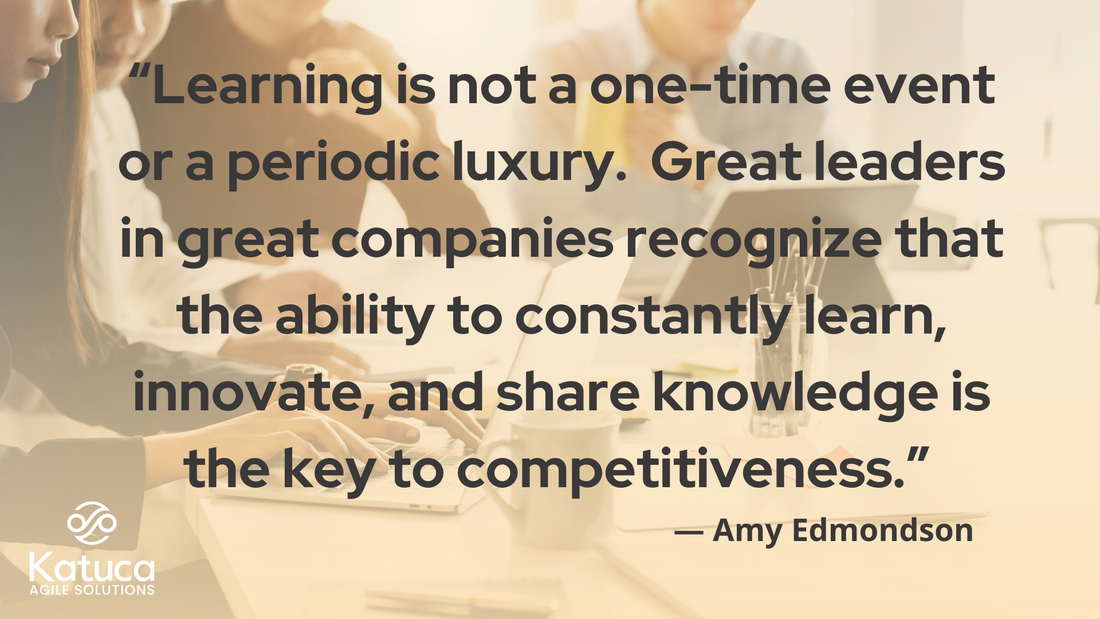
Overcoming the Struggles of Creating a Lasting Learning Culture in Your Company
Partager
In today’s rapidly evolving business world, a learning culture isn’t just a nice-to-have—it’s essential for staying competitive and adaptable. But despite the clear benefits, many companies struggle to create and maintain a learning culture that truly lasts. This article explores why companies face these challenges and offers practical solutions for building a culture of continuous learning that drives growth and innovation.
Why Companies Struggle to Build a Lasting Learning Culture
Creating a lasting learning culture is easier said than done. While most organizations acknowledge the value of employee development and knowledge-sharing, many find it difficult to sustain those efforts over time. Here are a few key reasons why:
- Lack of Clear Vision and Leadership Support Many companies fail to establish a clear and shared vision for what a learning culture looks like. Without strong leadership support and a clear commitment from top management, initiatives tend to fizzle out. Leaders must actively promote learning and set expectations for both individual and team development.
- Time and Resource Constraints In the face of tight budgets, fast-paced work environments, and competing priorities, companies may view learning as an “extra” rather than an integral part of their business strategy. Without sufficient investment in training programs, learning opportunities, and the infrastructure to support ongoing development, a learning culture can quickly become sidelined.
- Resistance to Change Organizational culture is often deeply ingrained, and introducing new ways of thinking or working can meet resistance from employees, particularly those who are already set in their ways. In many cases, there’s a lack of psychological safety—employees fear failure or judgment when trying new things, which stifles learning and innovation.
How to Overcome These Challenges: 3 Practical Steps for Building a Lasting Learning Culture
While the challenges are real, they aren’t insurmountable. Here are three actionable steps companies can take to embed learning more deeply into their culture:
1. Align Learning with Business Goals
Learning and development (L&D) initiatives need to be directly tied to the company’s strategic objectives. This helps employees see the relevance of their learning and how it contributes to overall business success. By embedding learning into key performance indicators (KPIs), companies can ensure that learning isn’t just an activity but a core part of the company’s growth.
Tip: Companies can hold regular meetings between HR and department leaders to ensure training programs align with team-specific goals and broader organizational needs.
2. Foster Psychological Safety and a Growth Mindset
For learning to flourish, employees need to feel safe to experiment, fail, and ask questions. Cultivating psychological safety is essential for encouraging risk-taking and the open exchange of ideas. Leaders should model a growth mindset—where failure is seen as an opportunity for learning—rather than focusing solely on outcomes.
Tip: Offer regular feedback, create safe spaces for discussion, and celebrate both successes and learning moments from failures. Encourage employees to share their personal development stories.
3. Incorporate Learning into Daily Work
In fast-paced environments, traditional classroom training or annual development programs may not be sufficient to create a sustained learning culture. Instead, integrate learning into the day-to-day work experience. This can include things like peer learning groups, mentoring programs, and access to digital resources like online micro-learning, courses or knowledge-sharing platforms.
Tip: Encourage informal learning through platforms like Confluence, Slack or Microsoft Teams, where employees can share articles, videos, and insights in real-time. This makes learning feel more accessible and relevant.
How Outsourcing Can Support a Learning Culture
For many companies, especially smaller ones with limited resources, building an in-house L&D infrastructure can be overwhelming. Outsourcing certain aspects of learning and development can be a game-changer. By partnering with external experts, companies can access high-quality training programs, content, and tools that might otherwise be out of reach. Outsourcing also allows companies to scale their learning initiatives without needing to hire a large L&D team or invest heavily in infrastructure.
Outsourcing options could include:
- Third-party e-learning platforms for easy access to a wide range of courses and certifications.
- External training providers who offer tailored programs or executive coaching.
- Consultants who can help design and implement learning strategies aligned with business goals.
Tip: Start small by outsourcing one aspect of L&D, such as leadership training or technical skill development, and measure the impact before scaling further.
Conclusion: Start Building Your Learning Culture Today
Creating a learning culture that lasts isn’t an overnight process, but with clear vision, the right strategies, and the support of external partners when needed, companies can make meaningful strides toward embedding learning into their DNA. The organizations that invest in learning today will be the ones that thrive in tomorrow’s competitive landscape.
Ready to foster a culture of continuous learning in your company? Start by aligning your learning initiatives with business goals and integrating learning into everyday work. If you need help getting started or scaling your learning programs, our team is here to guide you every step of the way.
Favourite sources for information
- Harvard Business Review
- McKinsey & Company
- Forbes
